You are here
Very Rare! Wwii 1945 Rhine River Campaign U. S. First Army Combat Assault Map
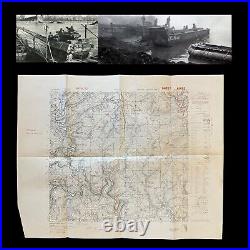
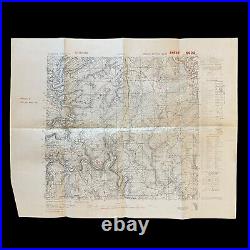
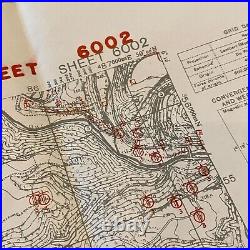
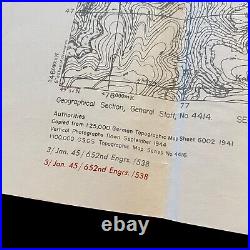
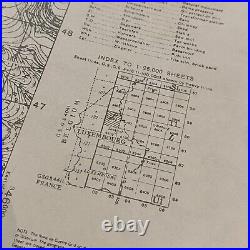
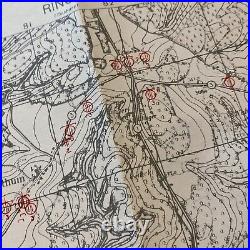
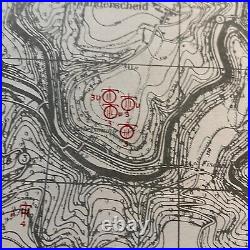


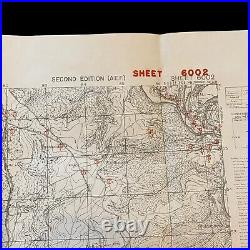
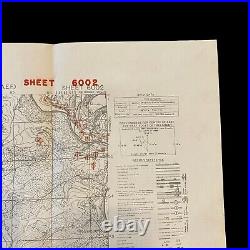
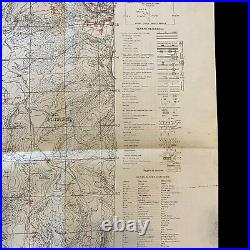
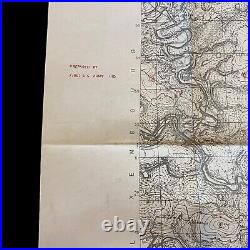
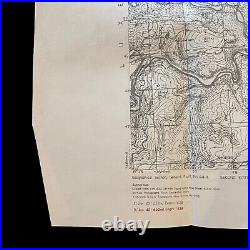
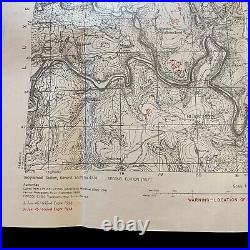
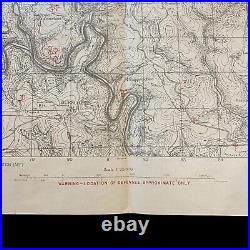
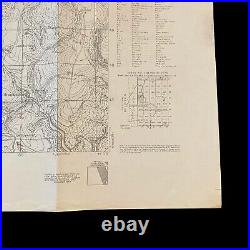

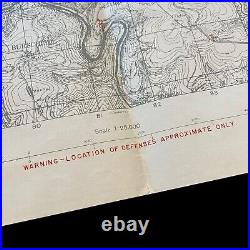
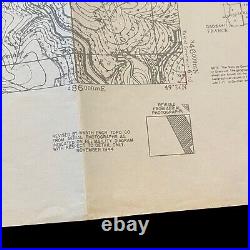
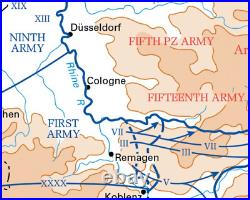


This incredibly rare and museum-grade Rhine River Campaign WWII 1945 combat assault map was used by General Omar Bradley's First Army in 1945 as U. Infantry and Armored Divisions advanced into Germany and crossed the Rhine River. The combat sector this U. Assault map shows is where the FRIST US ARMY crossed the Rhine River and battled the GERMAN FIFTH PANZER ARMY and the GERMAN FIFTEENTH ARMY. The Rhine was more than a river. It was a sacred waterway to the Germans, the source of most of their legends and myths. And at this stage in the war, crossing the Rhine was the last barrier between the advancing Allied armies and the conquest of Germany.
If the Germans could hold their beloved river, they might be able to stand off the Allies. Eisenhower, supreme Allied commander in Europe, had chosen to advance on Germany on a broad front, but the main axis of advance would be in the north, to pinch off and surround the Ruhr, Germany's industrial heartland. The primary advance of Operation Plunder was to be led by Montgomery's 21st Army Group, which consisted of the 1st Canadian Army, the 2nd British Army, and the 9th U. Army, by now all veterans of hard campaigns.
Titled "RINGEL" this combat assault is a very rare edition showing German bunkers, fortifications, machine guns emplacements, mortar positions, artillery in the area just across the Rhine River in Germany. As the Allied forces gathered on the west banks of the Rhine River, it was no longer a matter of surprise. The German troops knew that the Allied forces were only taking a short time to gather up strength before the invasion into Germany would commence. George Patton's US 5th Division crossed the Rhine River during the night of 22 Mar 1945, establishing a six-mile deep bridgehead after capturing 19,000 demoralized German troops. Patton, who actually did not have the orders to cross the river, did so under an extremely low profile: quietly, his troops crossed the river in boats without artillery barrage nor aerial bombardment.
His commanding general Omar Bradley, who issued the order for him not to cross to avoid interfering with Bernard Montgomery's operations, did not know of the crossing until the next morning. Bradley did not announce this crossing until the night of 23 Mar; Patton had wished the Americans to announce that they had crossed the Rhine River before the British.
The crossing was led by a heavy artillery shelling and supplemented by an airborne operation (Operation Varsity) by the American 17th Airborne Division and the British 6th Airborne Division. This paratrooper operation was not a typical one where troops were dropped a distance behind enemy lines before the operation to disrupt communications; this time, Bernard Montgomery chose to drop the paratroopers immediately behind the enemy lines after the conventional infantry had already crossed the Rhine River under the cover of darkness. After suffering significant casualties from heavy anti-aircraft fire, the airborne infantry landed and participated in direct combat during daylight to attack the German defenders from both sides. This operation to cross the northern Rhine River launched in the night of 23 Mar 1945. This airborne operation was the largest of its kind during the entire war, utilizing 1,625 transports, 1,348 gliders, and 889 escort fighters to deliver over 22,000 airborne infantry into the contested territory. Another 2,153 fighters supported the ground operations. Throughout the night of 23 Mar and the next day, 80,000 British and Canadian troops crossed the 20-mile stretch of the river.

